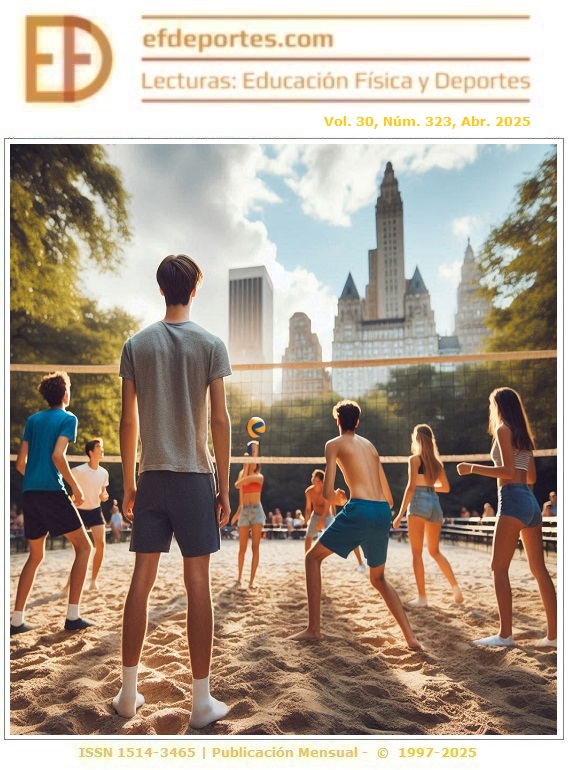Educación Física para la inclusión. Una perspectiva epistemológica y socioeconómica
Resumen
El presente ensayo tiene por objetivo problematizar los conceptos epistemológicos de la educación inclusiva, vinculando la corporalidad, sus concepciones y el movimiento como eje central en el desarrollo de la educación física y cómo, desde la diversidad de cuerpos y movimientos se experimenta el mundo. Luego se entregarán algunos atisbos de como la actividad física para todos juega un rol preponderante en la obtención de beneficios pecuniarios y no pecuniarios en los estudiantes y sus familias y las posibles consecuencias socioeconómicas para el lugar habitado y el contexto nacional; para finalizar con las diversas concepciones político culturales de lo que significa la diferencia y la diversidad en la clase de educación física. Las principales conclusiones apuntan al reconocimiento de concepciones de normalidad y diferencia cómo supuestos que sesgan y perpetúan inequidades en la asignatura de educación física y en los sistemas educativos.
Citas
Booth, T., y Ainscow, M. (2000). Guía para la evaluación y mejora de la educación inclusiva: Desarrollando el aprendizaje y la participación en las escuelas. Centre for Studies on Inclusive Education (CSIE). https://sid-inico.usal.es/idocs/F8/FDO21426/guia_para_la_evaluacion_y_mejora.pdf
Bronfenbrenner, U., y Morris, P. (1998). La ecología de los procesos de desarrollo. En Manual de psicología infantil: Modelos teóricos del desarrollo humano. John Wiley & Sons Inc.
Contreras, A., y Fierro, B. (2024). Formación inicial y continua de docentes de Educación Física escolar para una enseñanza inclusiva. Iberian Journal of Information Systems and Technologies, 71, 635-649. https://www.researchgate.net/publication/384054782
Dauenhauer, B., y Stoepker, P. (2022). Physical education and physical activity within a whole school, whole community, whole child approach. Journal of Physical Education, Recreation and Dance, 93(2), 12-19. https://doi.org/10.1080/07303084.2022.2020050
Fernández Blázquez, M.L.M., y Echeita Sarrionandia, G. (2023). Towards a more inclusive education: A school transformation. Teoría de la Educación, 35(1). https://doi.org/10.14201/teri.27699
Fierro, B., y Treviño, E. (2023). ¿Qué dice la política chilena para la integración escolar?: Un análisis crítico desde la perspectiva de la equidad. Revista Española de Educación Comparada, 42, 305-317. https://doi.org/10.5944/reec.42.2023.31993
Fierro-Saldaña, B. (2024). Análisis del currículo de educación física en Chile: Una mirada hacia la inclusión del estudiantado. Retos, 56, 941-948. https://doi.org/10.47197/retos.v56.103946
Fierro-Saldaña, B., y Treviño-Villarreal, E. (2025). Inclusion of students with disabilities in physical education: The Crossroads of systemic coherence. Physical Culture and Sport Studies and Research, 107(1). https://doi.org/10.2478/pcssr-2025-0004
Heisenberg, W. (1955). La imagen de la naturaleza en la física actual. Editorial Planeta.
Karisa, A. (2023). Universal design for learning: Not another slogan on the street of inclusive education. Disability & Society, 38(1), 194-200. https://doi.org/10.1080/09687599.2022.2125792
Lundvall, S., y Froberg, A. (2023). From individual to lifelong environmental processes: Reframing health in physical education with the sustainable development goals. Sport, Education and Society, 28(6, SI), 684-696. https://doi.org/10.1080/13573322.2022.2062320
Matus, C., y Haye, A. (2015). Normalidad y diferencia en la escuela: Diseño de un proyecto de investigación social desde el dilema político-epistemológico. Estudios Pedagógicos (Valdivia), 41(especial), 135-146. https://dx.doi.org/10.4067/S0718-07052015000300009
Merleau-Ponty, M. (2003). Fenomenología de la percepción. Ediciones Península.
Ministerio de Educación (2014). Currículo de educación física y salud. https://www.curriculumnacional.cl/portal/Educacion-General/Educacion-fisica-y-salud/
OECD (2021). Education at a glance indicators. Organization for Economic Co-operation and Development. https://www.oecd-ilibrary.org/sites/b35a14e5-en/index.html?itemId=/content/publication/b35a14e5-en
OECD (2019). Making physical education dynamic and inclusive for 2030, International Curriculum Analysis. Future of Education 2030.
Oliver, M. (2013). The social model of disability: Thirty years on. Disability & Society, 28(7), 1024-1026. https://doi.org/10.1080/09687599.2013.818773
Oreopoulos, P., y Salvanes, K.G. (2011). Priceless: The nonpecuniary benefits of schooling. The Journal of Economic Perspectives, 25(1), 159-184. https://doi.org/10.1257/jep.25.1.159
Organización de las Naciones Unidas (2006). Convención sobre derechos de personas con discapacidad. ONU. https://www.un.org/esa/socdev/enable/documents/tccconvs.pdf
Organización Mundial de la Salud (2022). Informe mundial sobre la equidad sanitaria para las personas con discapacidad: resumen. OMS. https://doi.org/10.52420/9789240064515
UNESCO (2021). Making the case for inclusive quality physical education policy development: A policy brief. https://unesdoc.unesco.org/ark:/48223/pf0000375422
United Nations (2020). Informe de los Objetivos de Desarrollo Sostenible. https://unstats.un.org/sdgs/report/2020/The-Sustainable-Development-Goals-Report-2020_Spanish.pdf
Derechos de autor 2025 Lecturas: Educación Física y Deportes

Esta obra está bajo licencia internacional Creative Commons Reconocimiento-NoComercial-SinObrasDerivadas 4.0.









